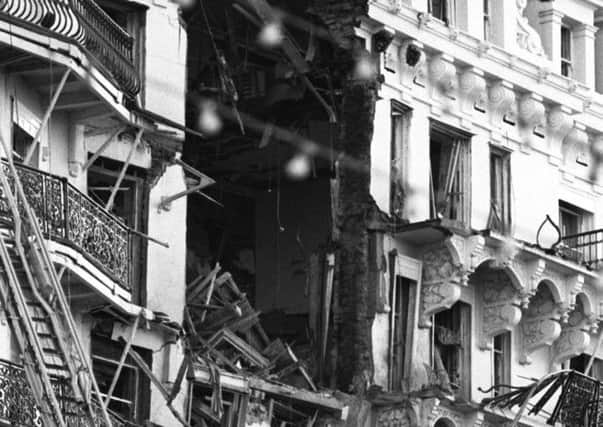Brighton bomb hit secret peace talks on Ulster


The 1984 Brighton bombing, orchestrated by the IRA, targeted the then government at the Grand Hotel during the October Conservative Party conference, killing five people and injuring 31 others.
Conservative MP Anthony Berry was killed in the attack orchestrated by Patrick Magee, who served 14 years in prison for the crime.
Advertisement
Hide AdAdvertisement
Hide AdIn a previously unknown consequence, the bomb jeopardised Mrs Thatcher’s own work four months earlier, when she sought and secured Cabinet approval for a series of secret liaisons with the Republic of Ireland.
The meetings were known within Downing Street as the “Armstrong/Nally talks”, named after Sir Robert Armstrong, then British Cabinet secretary, and Dermot Nally, the then secretary to the Irish government.
Updating the Government on their progress in June, before the Brighton bombing, Mrs Thatcher said: “If complete secrecy was not preserved, progress would be impossible. It was necessary at this juncture to look further ahead into Ireland than the British government had done before.
“Ten thousand British soldiers could not be left in Northern Ireland forever, nor could the very considerable cost of subsidising the province be sustained, without continuing search for possible forward movement.”
Advertisement
Hide AdAdvertisement
Hide AdThe covert interactions were launched to find solutions to the Northern Ireland crisis that were agreeable to both countries, and have since been hailed as a crucial steering committee for the Anglo-Irish Agreement announced in November 1985.
But documents revealed today show Mrs Thatcher was reluctant to sanction their continuation after the Brighton bomb, commenting that she was “very pessimistic” about their outcome in November 1984.
The meetings were quickly successful in the months before the attack. By October, Sir Robert Armstrong told Number 10 that he and Nally had found multiple “hypothetical” measures “on which both sides might agree”.
In a briefing paper he drafted in the week before the bomb, published for the first time today, he outlined in detail a proposed Joint Security Commission, mixed law courts and raised the idea of an Anglo-Irish Parliament.
Advertisement
Hide AdAdvertisement
Hide AdHe added: “Both sides agree that it would be desirable to introduce a system of devolved government into Northern Ireland.”
Following a meeting days after the bomb, Sir Robert told Number 10 that the Irish Taoiseach, Dr Garret Fitzgerald, wanted to agree the basis of the Anglo-Irish Agreement by December – a full year before the announcement was actually made.
Private correspondence between Mrs Thatcher and her closest advisers, revealed in the National Archives today, show the Prime Minister tried to cool negotiations after the bomb.
She commented that Britain must avoid the impression of “being bombed into making concession to the Republic”.
Advertisement
Hide AdAdvertisement
Hide AdIn a handwritten note, Mrs Thatcher told Charles Powell, one of her closest advisers and the government official leading Number 10’s involvement in the negotiations: “‘The bomb’ has slowed things down and may in the end kill any new initiative because I suspect it’s the first in a series.”
Mr Powell subsequently wrote to Sir Robert, directing him on how to negotiate with Mr Nally in an upcoming tete-a-tete.
He said: “The Prime Minister does not at this stage wish you to discuss a possible communiqué for the Anglo-Irish summit with Irish officials.
In a scrawl on a further communication with advisers in the following week, the Prime Minister wrote: “I’m very pessimistic. I do NOT think we can take this matter much further.”